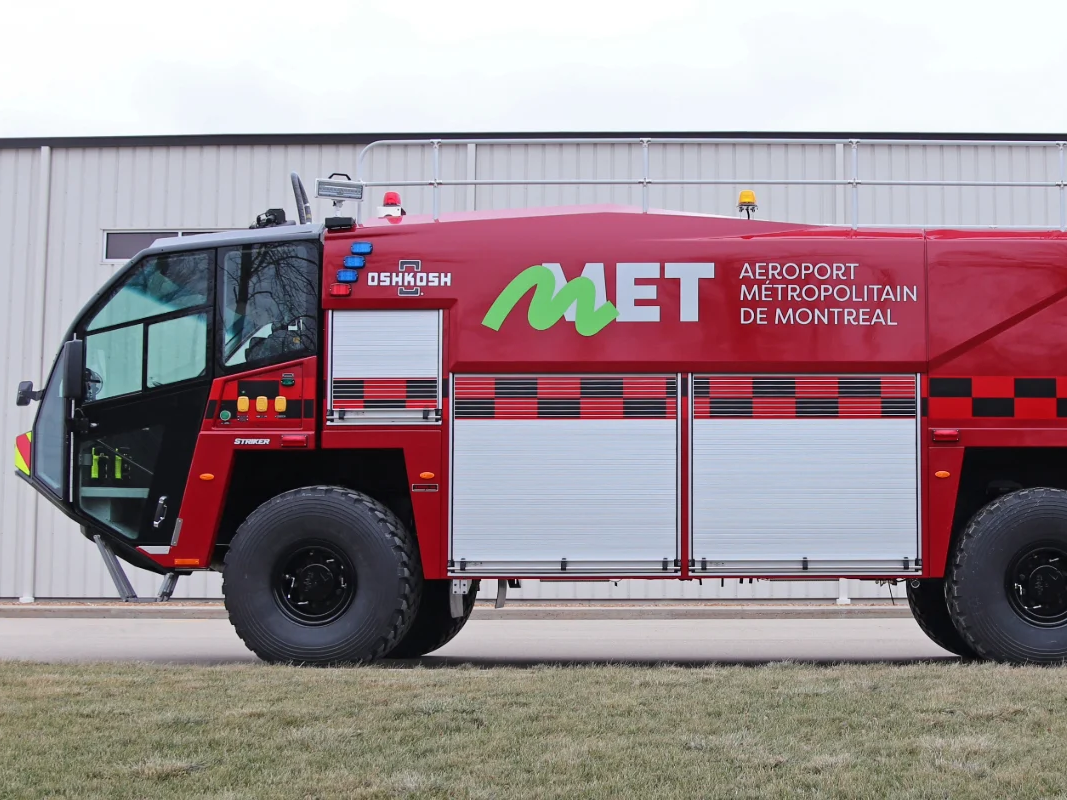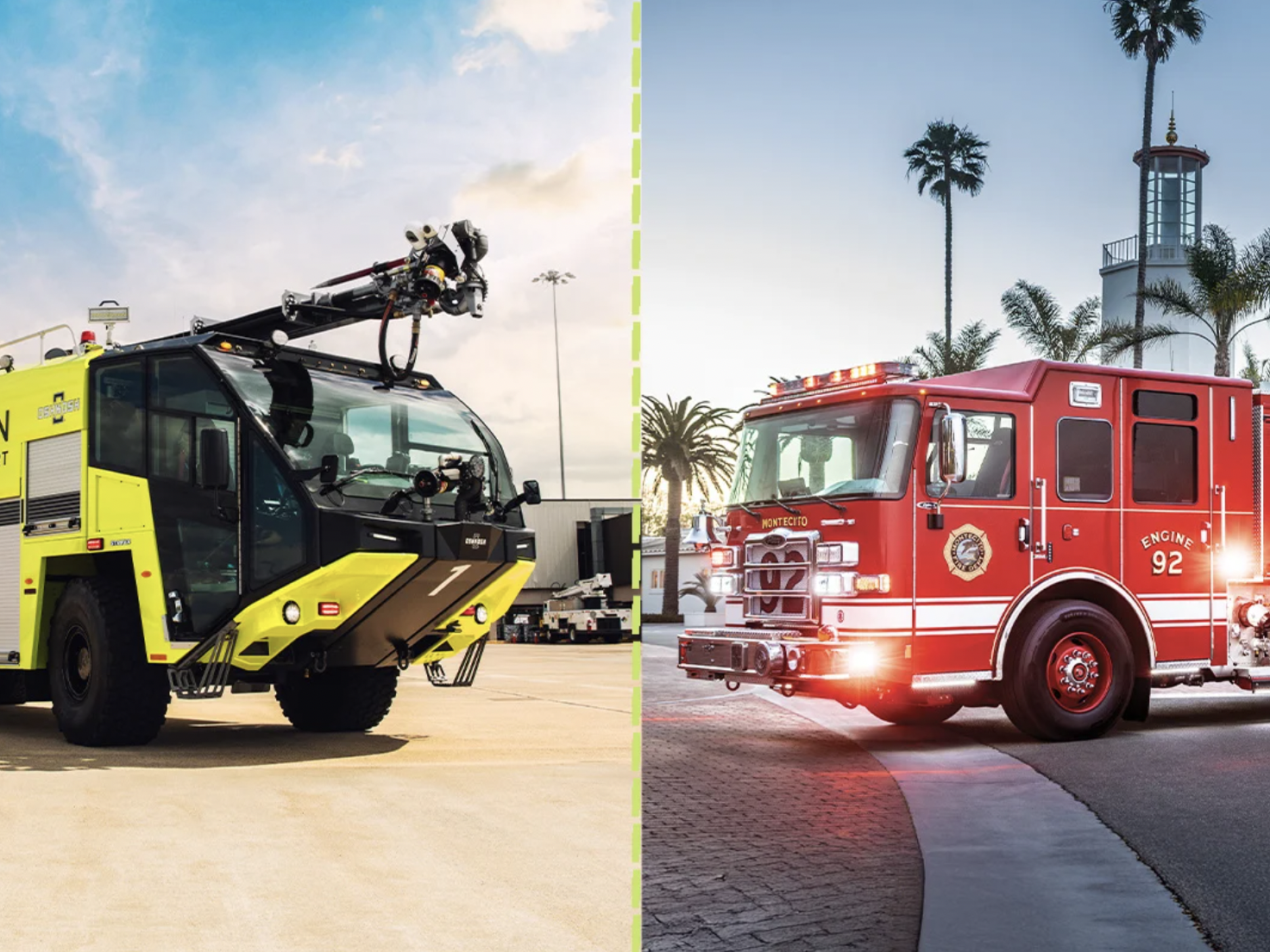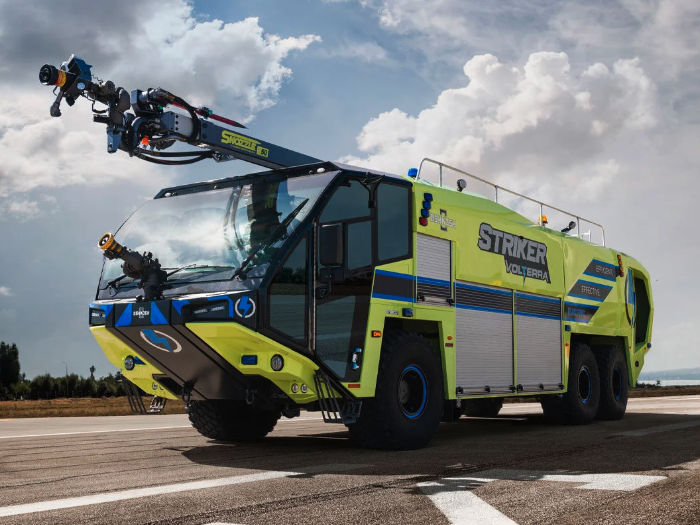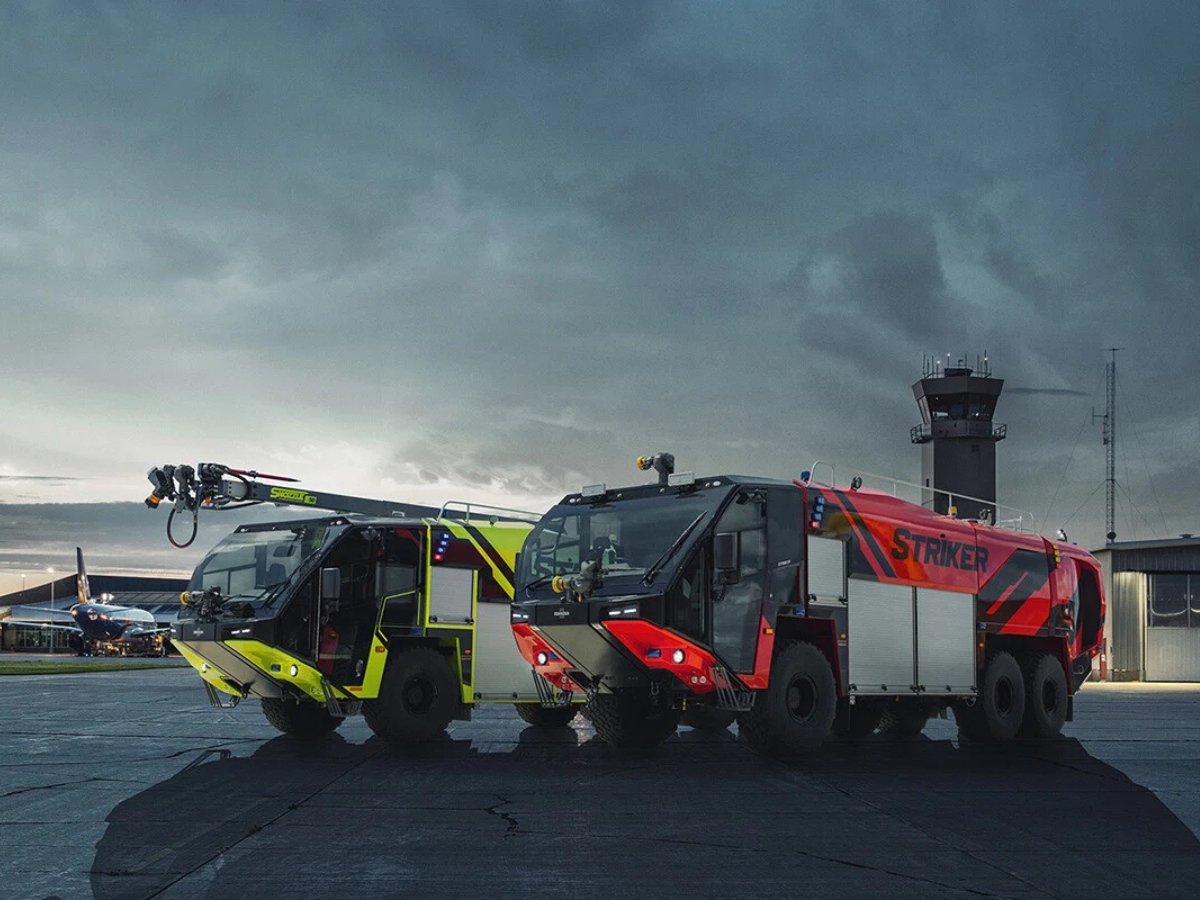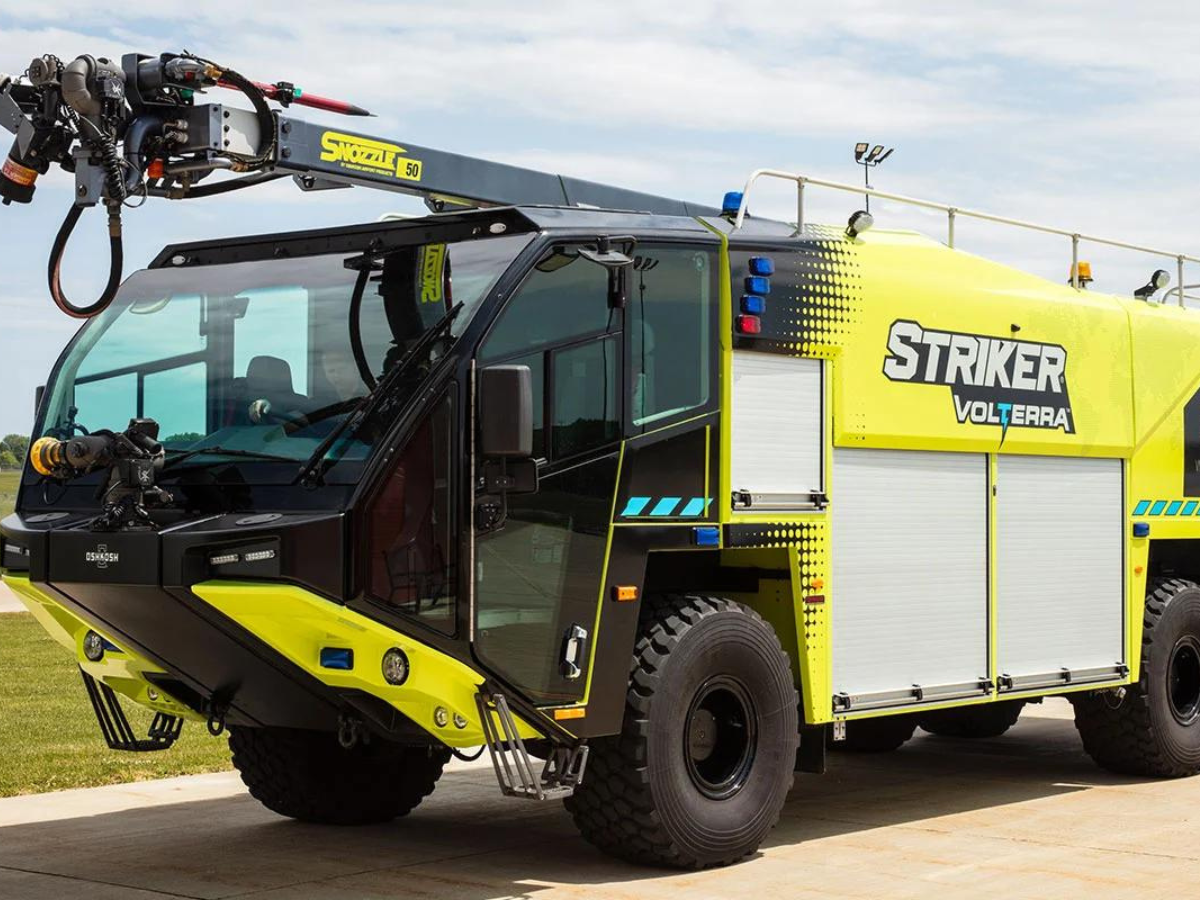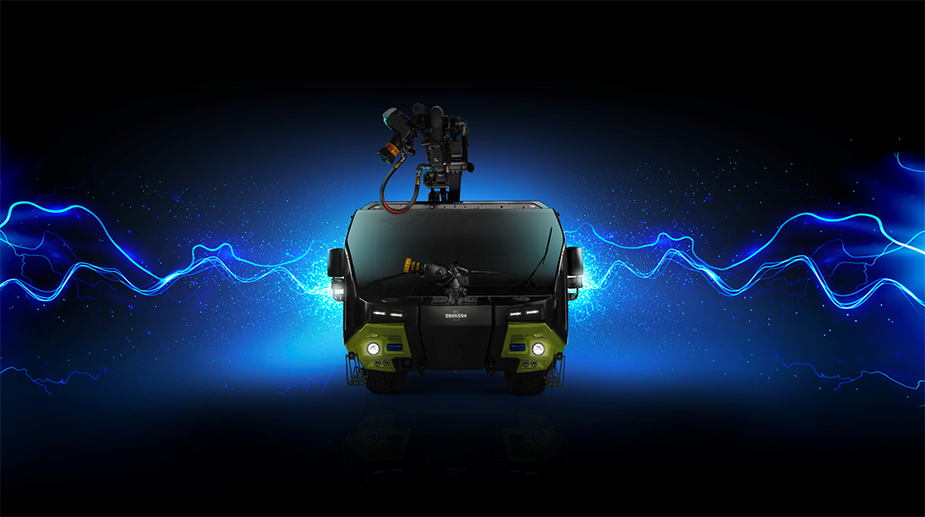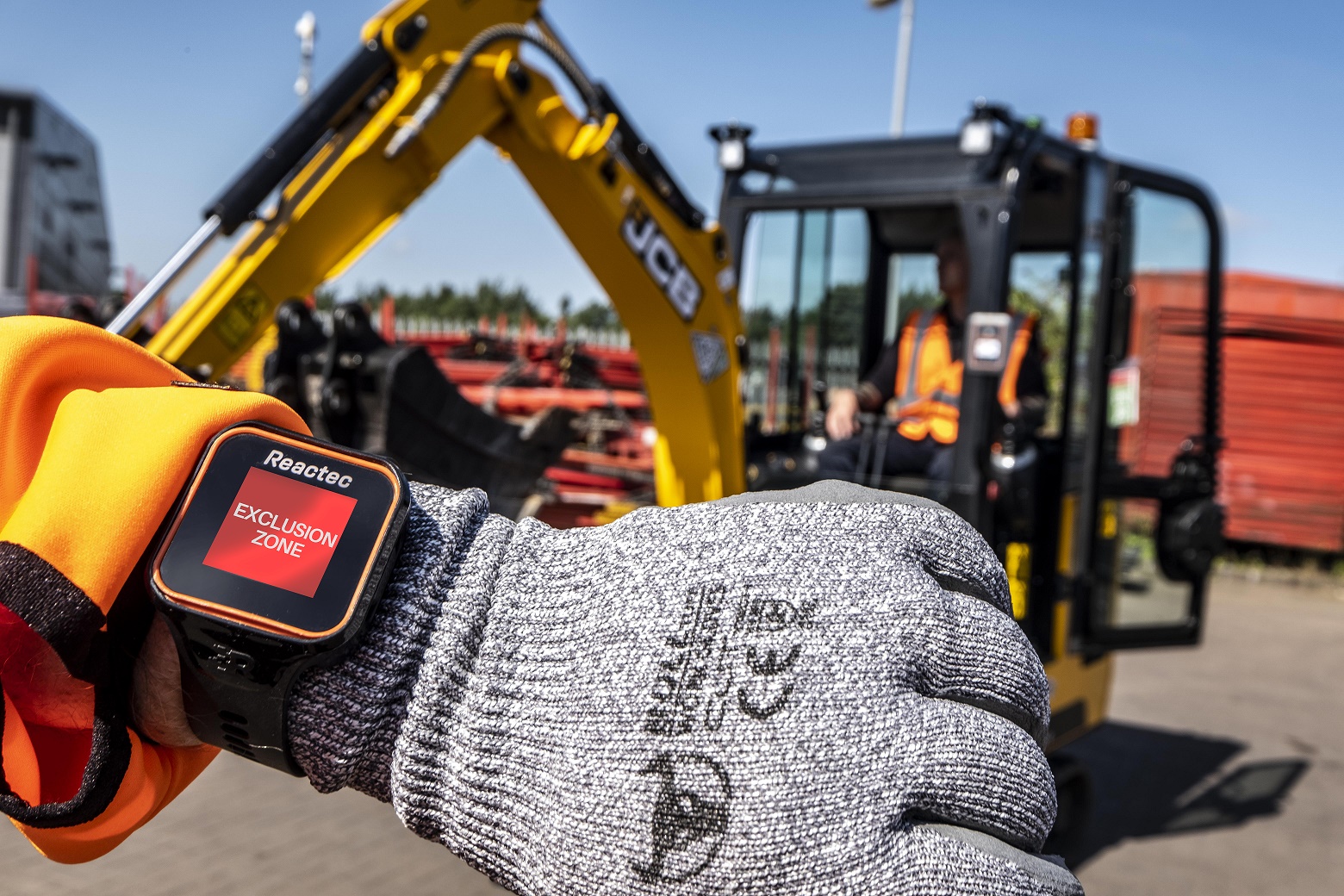Fire suppression techniques have progressed substantially over time since the birth of Oshkosh® ARFF vehicles.
Oshkosh technology has always been a catalyst for continuous improvement and outstanding performance within Oshkosh Airport Products ARFF vehicles.

ARFF truck attributes which have evolved most significantly over the years are elements supporting advanced fire suppression. Oshkosh Airport Products’ team members engineer the Oshkosh Striker® ARFF vehicle with a variety of water suppression components ranging from a roof turret, bumper turret, the Oshkosh Snozzle® High Reach Extendable Turret (HRET) and under truck nozzles with differing configurations.
These components enable fire suppression from all angles and provide exceptional solutions for airports across the world. A wide range of fires inside and outside the fuselage, as well as ground fires can be successfully extinguished with Oshkosh Airport Products ARFF vehicles.
ARFF Vehicle Standard Bumper Turret
The standard bumper turret comes on all Oshkosh models and is one of the first lines of defense in fighting aircraft fires. The turret sits just below the windshield and can be seen and operated from the driver’s chair in the cab. The bumper turret flow rates vary by model; the Striker 4×4 standard flow rate is 375 gpm (1,420 lpm) while the Striker 6×6 and Striker 8×8 models are standard at 625 gpm (2,365 lpm).
ARFF Vehicle Low Attack Bumper Turret
This option allows drivers to move the bumper turret to near ground level. The low attack bumper turret on the Striker ARFF truck offers the same flowrates as the standard bumper turret but can be lowered to 12 inches (30 cm) above the ground. This feature is used to extinguish low angle fires on the runway. The low attack bumper turret offers a simple solution for firefighters through easy application inside the cab.
The low attack bumper turret is controlled by a joystick in the cab which allows for easy deployment and stowing back into the truck after use. This turret arrangement assures substantial extinguishing capabilities at the operator’s fingertips.
ARFF Vehicle Roof Turret
Striker ARFF vehicles are engineered with roof turrets to combat fires from multiple areas on the truck. Like other turrets on the Striker ARFF truck, this component is operated by an electric joystick inside the cab and customers can choose between multiple configurations including non-aspirating and aspirating options, differing flow rates and agent integration.
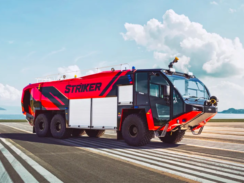
Discharge rates start at 375 gpm (1,420 lpm) and go up to 1,585 gpm (6,000 lpm). The roof turret can rotate up to 270 degrees and various lighting and camera options are available.
Snozzle HRET
The Snozzle HRET greatly increases fire suppression from different angles as well as heights. This technological advancement aids in fighting fires from elevated positions and can maneuver into tight positions to attack fires below grade. The Snozzle HRET can douse the aircraft with unrivaled precision and can eliminate fires over wing exits and through doorways.
With a wider range of motion, both of the Snozzle HRET’s configurations can rotate 60 degrees. The 50-foot (15.2 m) configuration can sweep 36 feet (11.2 m), while the 65-foot (19.8 m) configuration can sweep 46 feet (14 m).
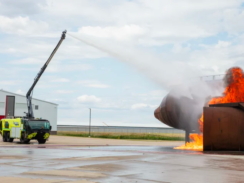
The patented design of the Snozzle HRET discharges a full master stream at ground level, aiding in elimination of overspray and increasing visibility and agent application. The low positions this feature can reach streams water onto ground-level fires, eliminating flames, and allows the ARFF vehicle to reach all areas of the aircraft. The Snozzle HRET can be used to smother fires taking place in various areas including the wheels and brakes, cargo holds, fuel tanks and areas underneath the aircraft.
ARFF Vehicle Under Truck Nozzle
Under truck nozzles protect the vehicle from flames at the crash scene. The discharge rate of the under-truck nozzles is 19 gpm (72 lpm), providing a continuous flow of water for added protection.
The nozzles underneath the truck work in conjunction with the primary discharges. With both nozzles in use, the vehicle can operate effectively while remaining protected from ground fires.
ARFF Vehicle Fire Suppression Components – Additional Features
Forward Looking Infrared (FLIR) Cameras
Also known as thermal imaging cameras, our Forward Looking Infrared (FLIR) cameras aren’t directly responsible for extinguishing flames, but they play a critical role in fighting unseen fires. The monitor inside the cab displays the video taken by the thermal camera to the operator. This feature allows firefighters to determine the location of fires inside the fuselage that would otherwise be impossible to see from the ARFF truck.
Piercing Tip
The Snozzle HRET on the Striker ARFF vehicle is engineered with a piercing tip to penetrate interior trim panels and overhead baggage compartments on a fuselage. The Snozzle HRET piercing tip has a standard penetrating depth of 36 inches (91.5 cm) and an optional 12-inch tip extension.
The penetrating speed and depth of the piercing tip are managed by the operator inside the cab, enabling precise application of agent. The piercing tip also aids in the fire suppression process by using a misting technique to add to the versatility of the Snozzle HRET.
Oshkosh Airport Products understands the crucial nature of proper fire suppression required at airfield crash scenes. This is why airports have the option to equip their fire apparatus with differing configurations ranging from a roof turret, bumper turret, Snozzle HRET, under truck nozzles, thermal cameras, and fuselage-piercing tips.
This article was originally published by Oshkosh.


